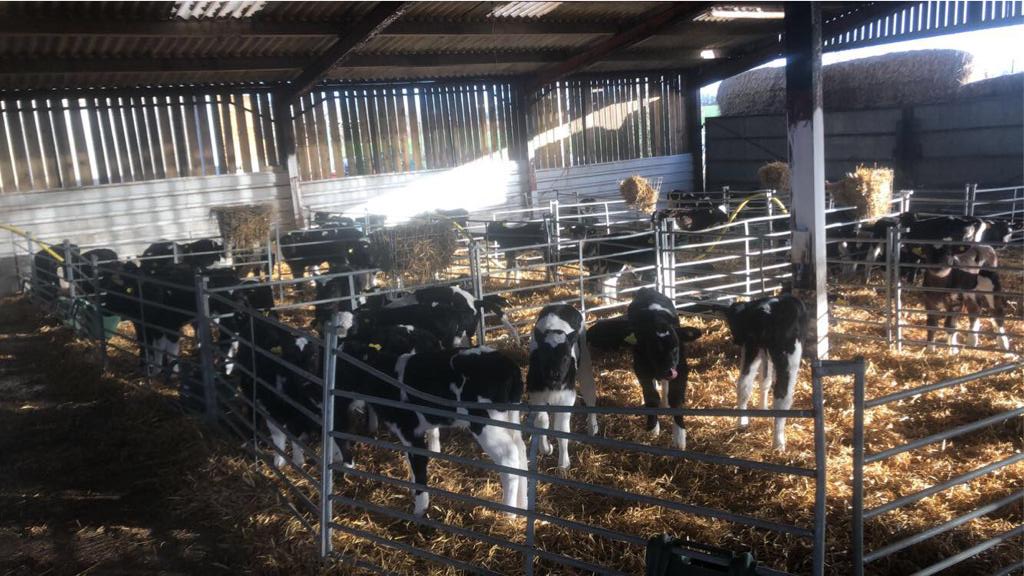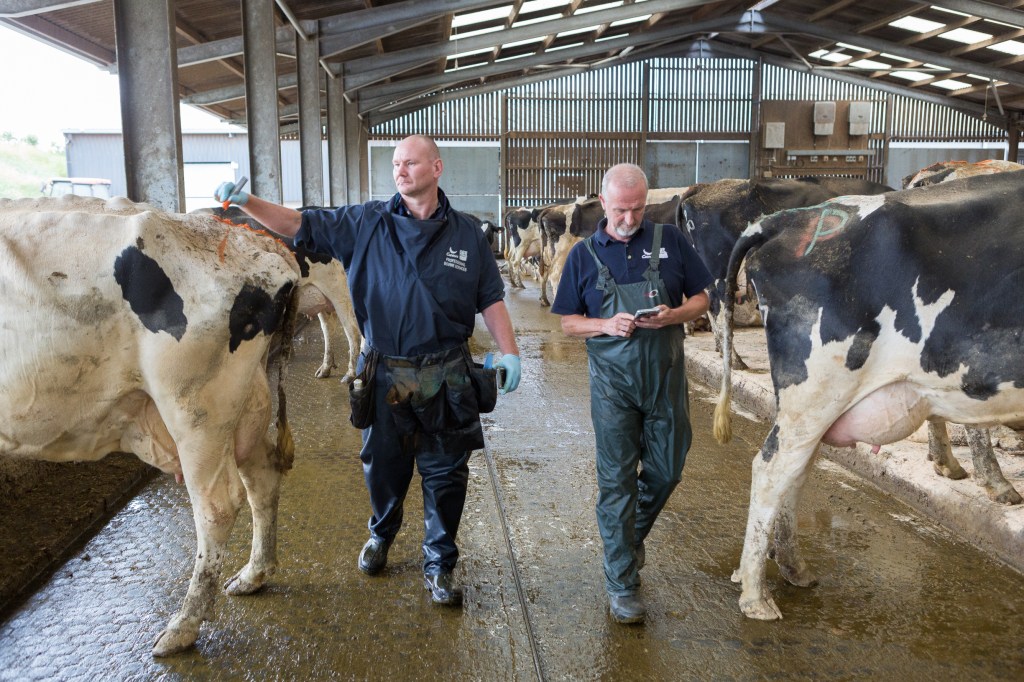Artificial insemination and genomic testing have transformed cattle breeding programmes over the past decade.
The use of carefully selected bull semen in breeding, both for dairy cow replacements and terminal beef traits, has increased by more than 300% since 2015.
Farmers have begun to see the impact that better breeding selection can have on their profit margins, and are acting accordingly.
Breeding goals
Breeding objectives differ from herd to herd. There are multiple factors that breeders have to consider when deciding on their overall breeding goals. But, whatever these are, the goals themselves are key to success. If there aren’t clear goals set out, breeders can find themselves getting off track, and depressing the levels of profits that they might otherwise be making.
First and foremost, those breeding goals need to be realistic. A breeding program should be conscious of the production environment, the costs and the revenue sources. If you’re chasing ambitious breeding goals without the environment to sustain them or the financial underpinning to achieve them, you will end up worse off.
Consistency
While breeding objectives should be consistent, they must still have some flexibility. Genetic progress occurs over time. Breeding objectives shouldn’t be based on one generation, but rather in understanding that particular traits take several generations of breeding to achieve the best quality results.
If the short-term goals oscillate between diametrically opposed breeding decisions, the long-term goal will become unachievable. The more consistent you can be, the better the overall result will be.
Flexibility is still important though – if something comes up in the herd that was unexpected, and that wasn’t accounted for at the beginning of the breeding program, then obviously that needs to be accounted for, so some flexibility needs to be adopted.
Measurable, data driven objectives
Data-driven breeding objectives are breeding goals which should be measurable so that progress can be tracked over time, and selection decisions around cow, progeny, genetic variation and trait should be made without emotion, driven purely by the data available.
Selection indexes make these decisions easier, and genomic testing can give clearer intelligence around the best cows for breeding for different purposes.
Profitability
And finally, breeding objectives should be profitable! That’s why selection indexes are important to deciding your goals and moving forward with them.
Working out which traits fit your production environment and contribute to a herd’s profitability is a key deliberation up front.
Achieving your breeding objectives
Multi trait selection is almost always going to be necessary. While not all traits are of equal importance, knowing which ones are a priority, which will drive the most profit, and which correlated traits fit with them is a necessity.
There are three options for multi-trait selection:
– Tandem selection
– Independent culling levels
– Economic selection indexes
Using selection indices in your breeding program
When it comes to genetic engineering and artificial insemination, the most effective tool for multi-trait selection is selection indices. These enable breeders to select on aggregate economic merit.
Selection indices take all of the economically relevant traits or indicators and then:
- Attach an economic value to each trait (EPD)
- Account for genetic correlations
- Deliver a single value – interpret as the difference in per-calf profit between sires
In this way, we can directly quantify the profit that can be attached to a breeding goal.
As multi-trait selection became the norm in dairy breeding programs, the development of selection indexes played a major role in balancing the genetic merit of each individual for each trait under selection, based on their economic value or desired genetic changes.
Selection indexes have been refined over time to enable direct breeding emphasis towards specific production systems, market demands, or to address emerging production, environmental, or societal aspects of the dairy industry and society as a whole.
Estimated breeding values
Choosing the best breeding stock and the right bull semen for your breeding objectives has been made easier and more reliable due to estimated breeding values (EBVs).
Genetic assessment and artificial insemination give breeders the opportunity to improve the genetics of their herd generation on generation, by choosing bulls with high EBVs, and traits that are complementary to their herd’s genetic makeup.

Non-linear economic values
Additional performance doesn’t always equal additional profit, and in these cases, traits need to be modelled as non-linear in order to reflect real-world profitability. Some traits only add profit up to a point. For example, when breeding for increased milk production, there comes a point where additional milk will not contribute to additional profitability.
Similarly with calving ease, breeding out calving problems will improve profitability in the first generations. But there comes a point where the economic impact of this will wane.
So with an overview of the way to choose desirable characteristics in a herd, here are five ways that selective breeding can help create healthy profit margins and increase your overall profitability.
1) Increased dairy production
In dairy farming, business profitability is driven, for the most part, by the performance of the milking herd. High-quality performance is based on the production environment and the genetics of the cows.
That means that to improve profit margins via increased milk production it’s important to look for priority traits that will give you low input, healthy heifers with, for example, a high daughter pregnancy rate (DPR), a high heifer conception (HCR) rate, and good udder health (SCS, or Somatic Cell Score).
The increased use and reliability of sexed semen has made it easier to breed dairy replacement females from the most profitable cows in the herd.
When the aim is increased milk production, especially at first lactation, easy calving heifers are an essential choice, paired with easy calving bull semen. The fewer issues in first calving, the quicker the heifers can breed back.
2) Reduced calving difficulties
Calving difficulties cost your production money. Lower lactation levels, calf distress, and stillbirths all divert away from your profit centre.
Heifers tend to have more breeding difficulties than mature cows. Ensuring a good growth rate in the heifers you are breeding is important to minimise issues in calving. There needs to be access to grazing, and there needs to be regular weighing. This is in order to make sure heifers are meeting the weight targets to deliver healthy calves.
To reduce the risk of birth issues and dystocia:
- Heifers should be around 65% of their mature body weight at the beginning of breeding, and 85% at first calving.
- Choose easy calving bulls to breed heifers.
- Do not restrict feed before calving in order to manipulate birth weight. This can actually increase calving problems and make initial lactation more difficult.
- Calf heifers early in the calving season so they have more time to recover from and continue their growth before their next breeding.
3) Higher value cross breeding
Artificial insemination has completely transformed the market possibilities for dairy farmers. Using selective breeding and AI, farmers can now terminally breed their less profitable dairy cows for traits that are more profitable to the beef industry. This is by introducing a higher profit margin through cross-breeding.
Incorporating a beef-on-dairy strategy into dairy farming ensures that otherwise low-value cattle can create additional value through genetic selection and improvement, both in the short term. But also as part of a longer-term breeding plan, as selectively breeding for quality terminal beef traits over several generations will improve the profitability of the beef cattle.
Choosing beef semen with the right traits for good quality beef (for example; high muscle content, marbling, fat depth and beef yield) is essential for a beef-on-dairy breeding program.
4) Greater genetic diversity and fewer health problems
Next generation, modern breeding technology, including sexed semen, artificial insemination and genomic testing enables breeders to select and breed profitable and efficient herds. But it also gives breeders access to a wider genetic diversity than ever before.
Breeders mitigate the issues of inbreeding in their breeding programs by selecting complementary traits when buying high-quality bull semen. This applies to both dairy replacements and high-quality beef production. It’s no longer necessary for cattle offspring to be bred using the same bulls.
This leads to better genetic variation, stronger genes, and fewer overall health problems. The healthier the calves, the more profitable they will be when it comes to selling them.
In addition to this, cows can be selected for their disease resistance traits, in order to remove costs for any health issues and treatments, such as mastitis, milk fever or lameness.
5) Responsive to market value
Selective breeding using bull semen and genomic testing allows breeders to be more responsive to the factors that are affecting market value.
The UK has a rich diversity of cattle breeds, fit for the wide range of environmental conditions across the country. This diversity is excellent for UK market. With a wider selection of both dairy and beef cattle available, the consumer has a greater choice of end product.
By assessing the market trends for certain breeds, farmers can make decisions around their artificial selection that are market-driven to improve profitability.
As an example, wagyu beef is one of the most sought-after on the market. Its sale price, even cross-bred, can be up to 10 times higher than breeds such as Angus or Holstein.
By understanding market demand, breeders can identify an important trait or the market. They can make a decision around whether that trait fits with the environmental factors of their production and genetic makeup of their current herd.






